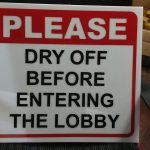
The art of music instrument brass engraving is dying, and also quickly. The earliest masters are selected few youngsters filling their places, as well as the globe of instrument production is incrementally replacing hand etching with devices and also lasers. How can something so beautiful as well as famous be threatened?
I lay out to comprehend the art of saxophone instrument brass engraving from the leading masters of the craft worldwide today: Sherry Huntley of Artistic Inscription as well as Jaice DuMars of DuMars Hand Inscription. I likewise obtained some unique point of views by taking a look at etching in other markets with printmaker and associate teacher of Engraving Arts at Emporia State University James Ehlers. Ultimately, I spoke with Ryan Pedestrian, among the more youthful generation of musical instrument engravers who is looking for to keep the craft active as the internal engraver at the Sax ProShop.
The art of inscription is a time recognized custom in the saxophone globe. A few of the most precious models of vintage saxophones are described by their legendary inscription instead of their specific version. Buescher’s “Stovepipe hat and Walking Stick” and also Conn’s “Naked Woman” are a testimony to the power of craftsmanship coupled with stunning creativity.
Today, we discover numerous factories switching over to more modern techniques of engraving to reduce expenses as well as boost consistency in layout, but several vintage saxophone fans find the character that features the mild variants in layout part of the appeal. Luckily we still have a number of very skilled engravers practicing the craft today, who are additionally wishing there will certainly be a lot more specialized people to bring it on in the future.
This article will talk about the history of inscription, devices as well as techniques, techniques, obstacles, and how one can begin their own trip as an engraver.
INSCRIPTION MUSICAL INSTRUMENTS
Brass tools such as cornets, trombones, and also tubas have been adorned with instrument brass engravings for numerous centuries. However, the relatively young saxophone took time to catch up to various other a lot more elaborate wind instruments.
On the earliest saxophones in the mid and late 1800’s, the etching located on them merely indicates the manufacturer, model, identification number, as well as area of manufacture. It wasn’t up until the early 1900’s that saxophone manufacturers began adorning the tool. The attractive inscription was added as a means to mount the manufacturing details, and also later the embellishment becomes increasingly more intricate.
The appearance of musician designs gave the purchaser a lot more alternatives, with sophisticated layouts in silver and also gold plating. The instrument brass engraving were often paired with combinations of bright highlights to contrast the satin coating of the instrument, as seen with the 1920’s Conn Virtuoso saxophones.
The variants stylishly mirror both what was prominent at the time worldwide of layout, yet also the character as well as choice of the specific engraver. Popular pictures include cameos of stunning females, floral patterns, pastoral nature scenes, and art deco patterns.
EARLY INSCRIPTION MASTERS
Jake Gardner was Conn’s first signmaker engraving and also his remarkable work can be seen on several cornets and also instrument brass engraving trombones in the mid as well as late 1800’s.
He showed brothers Charles and also Julius Stenburg, that held true masters and benefited Conn with the mid twentieth century.
The Osborne family created a number of exceptional engravers, consisting of master engraver for Conn, Jake Osborne, as well as children Lynn & Lyle Osborne who continued with the profession.
TOOLS AND DESIGNS OF INSTRUMENT BRASS ENGRAVING
The engraver utilizes a variety of engraving tools of various sizes and shapes to attain the desired impact. The tools are called gravers as well as they vary in size as well as pointer shapes. One of the most common are level gravers which are most generally used for wriggle cuts. There are likewise tools called linings that have a collection of little grooves on the bottom that develop a distinct pattern in the instrument brass engraving. Wide gravers are used for shading.
We got a chance to ask a few of our preferred instrument brass engraving regarding their preferred tools.
Jaice DuMars has a significant quantity of gravers in his device box, yet generally makes use of just a couple of. His go-to devices are # 38 flat graver, # 40 flat for most lines on a Conn 6M, # 42 flat for the edge idea of flowers, # 49 level- liner kind graver, a custom made beveled 120 degree graver, and also a custom graver for larger rounded lines.
Sherry Huntley makes use of a variety of linings, a round graver, flat tools, as well as a press device. Her top referral is a magnifier or optimizer. By doing this you can make certain whatever matches, as well as see small details. To engrave, one need to have the suitable products as well as devices, and also technique on the curved surface areas in addition to flat sheets of brass.
James Ehlers mainly utilizes two tools for push inscription: one for broader cuts has a 100 level base, 25 degree face and 12.5 level lift. The other for information has the top ground down to a factor with a little 45 degree face, 90 degree base and also 17.5 lift. For pneumatically-driven engraving, he generally makes use of a small 120 degree graver with a 45 level face as well as 17.5 lift. All gravers are generally carbide. James suggests beginning with a graver, a sharpening stone, as well as a sharpening jig, prior to going up to the extra specific tools from GRS.
Ryan Walker makes use of a variety of antique gravers along with gravers by E. C. Muller, Grobet, and GRS. He additionally makes his very own gravers when a big or weird sized graver is necessary.






